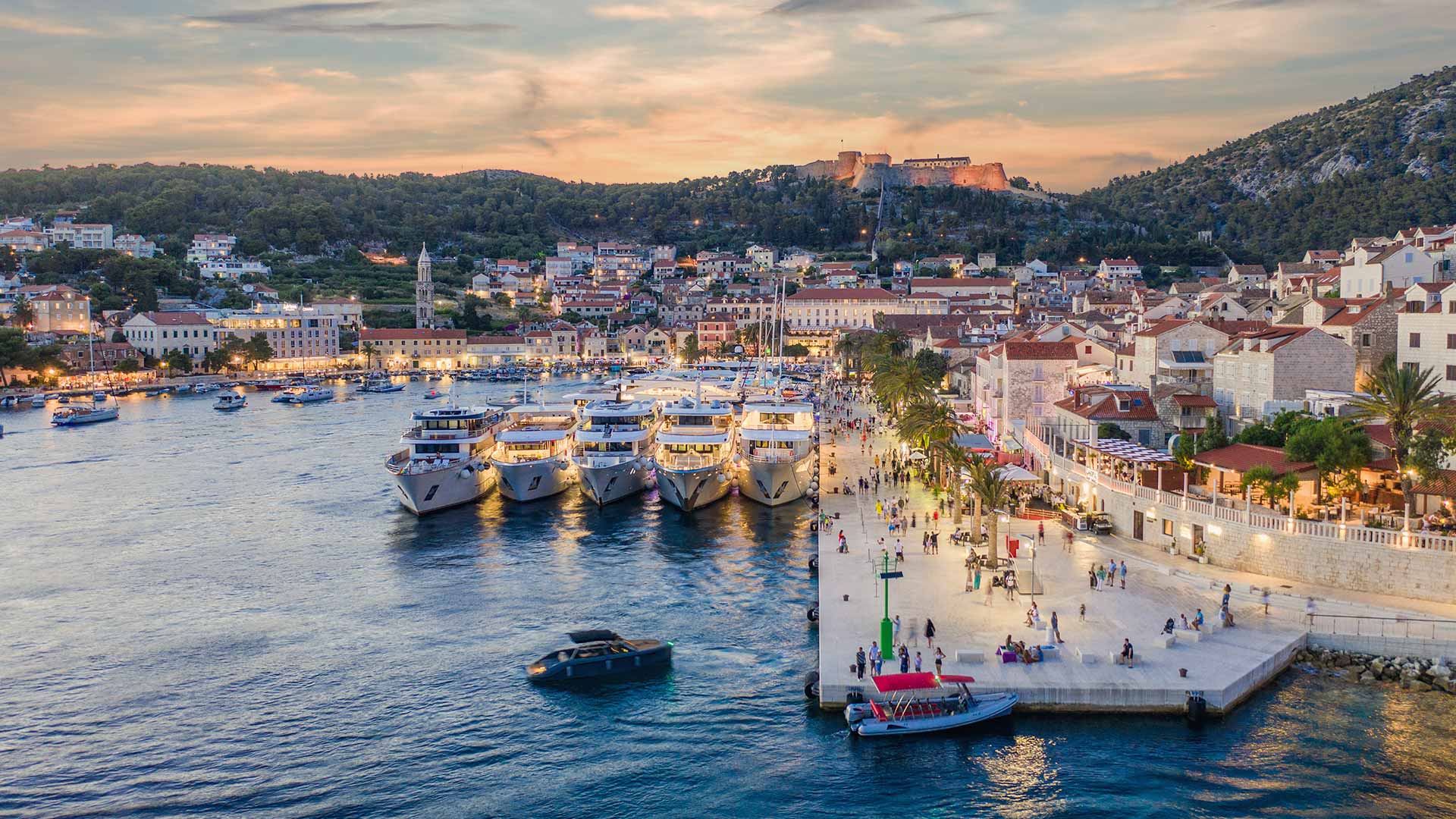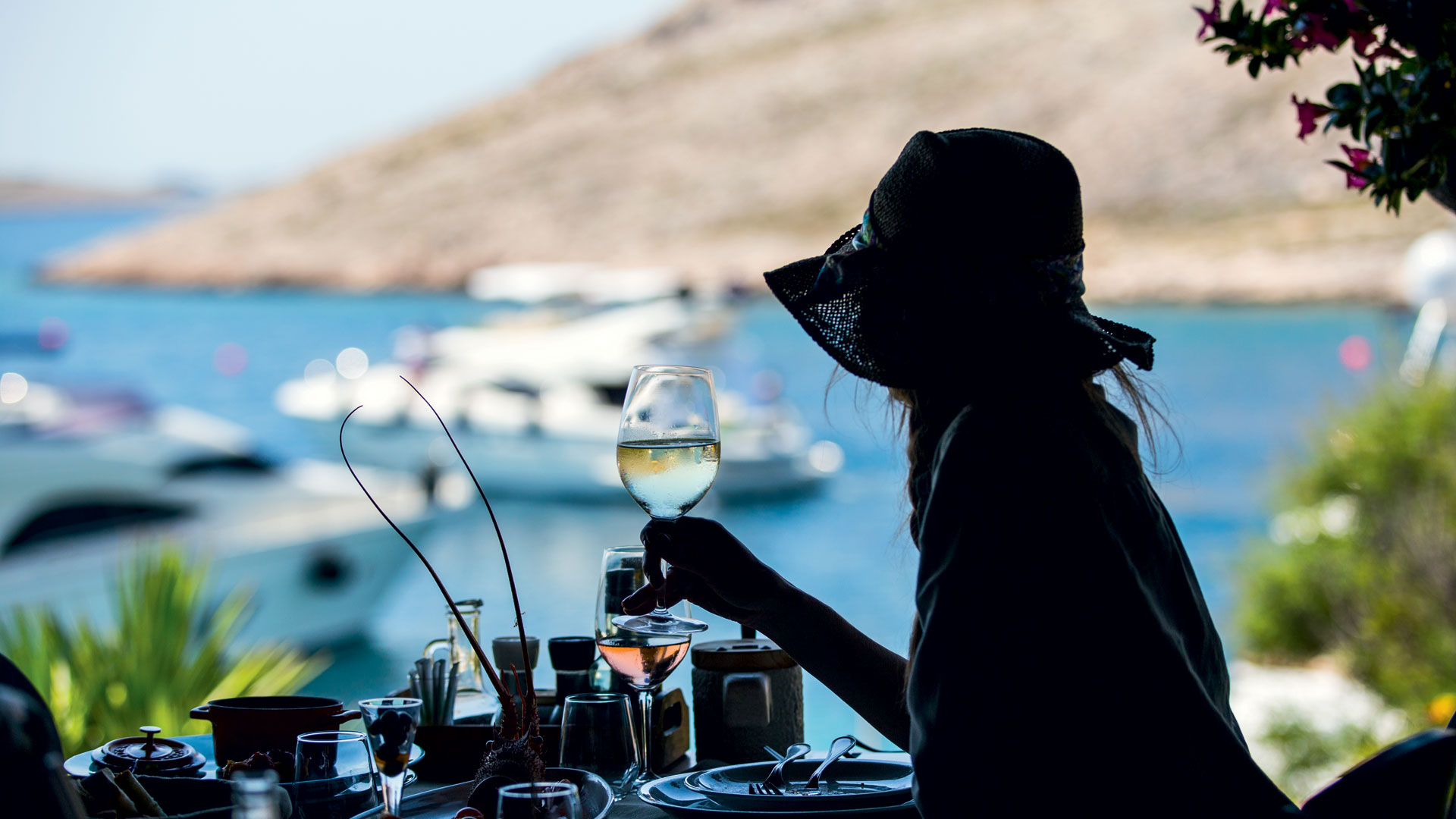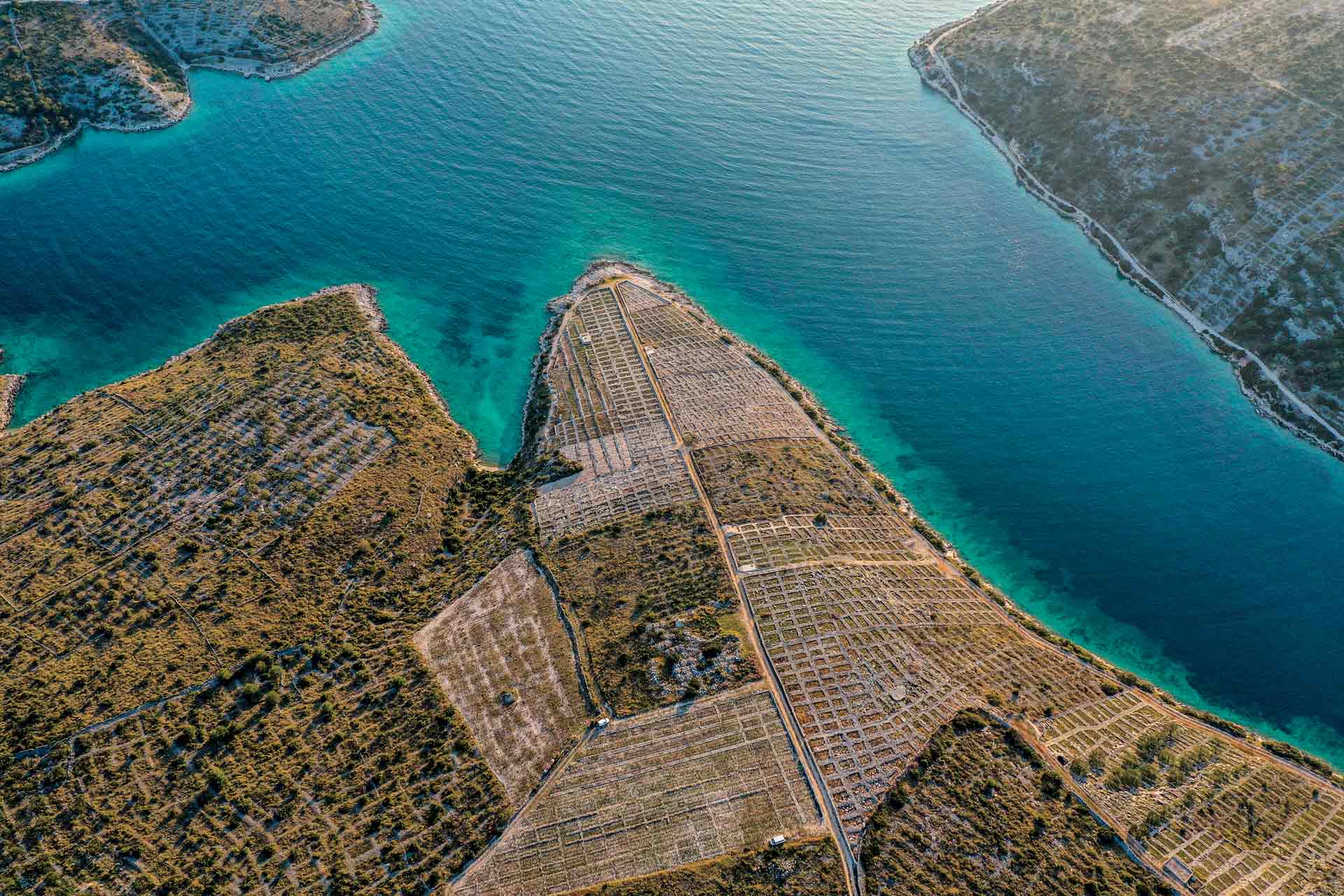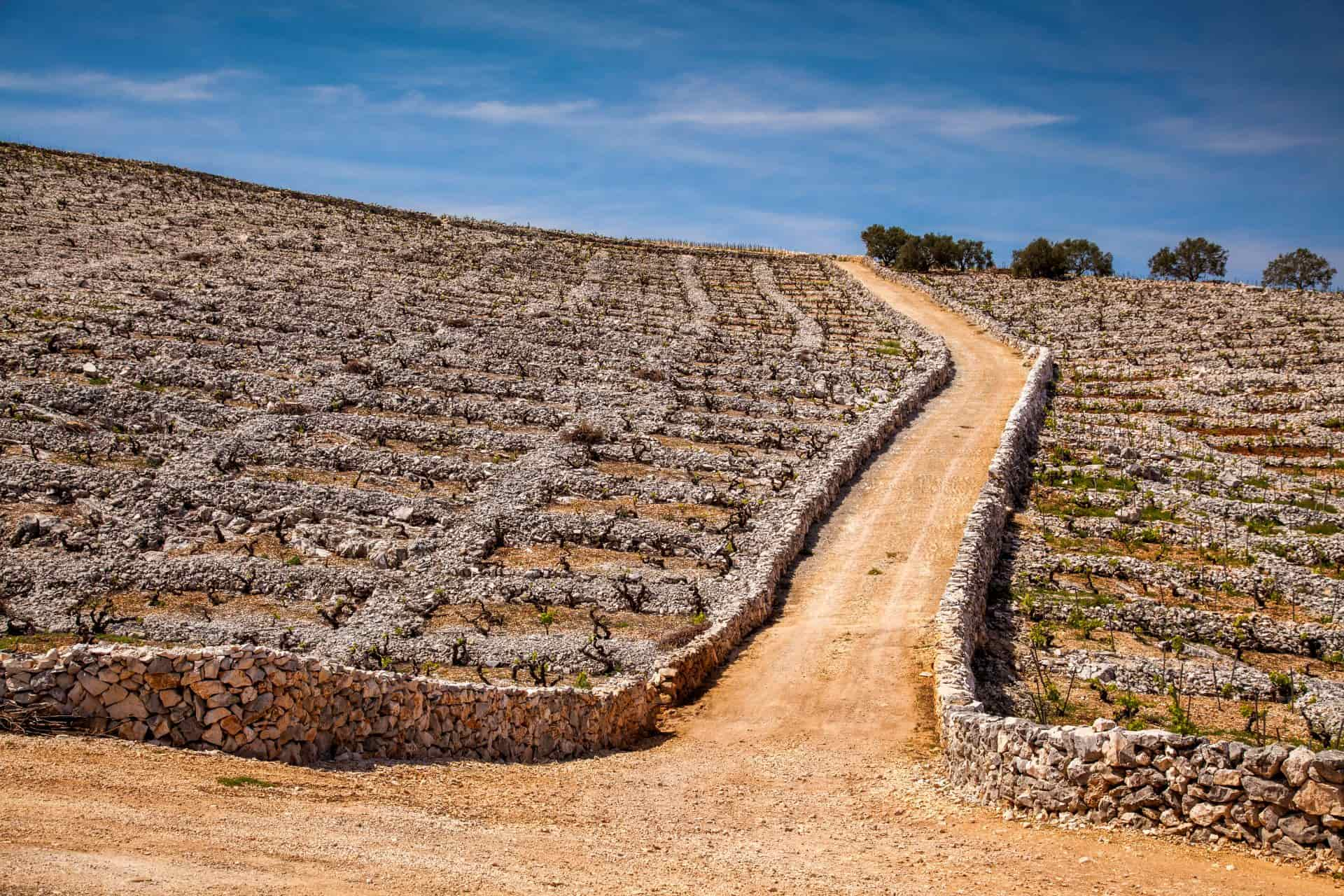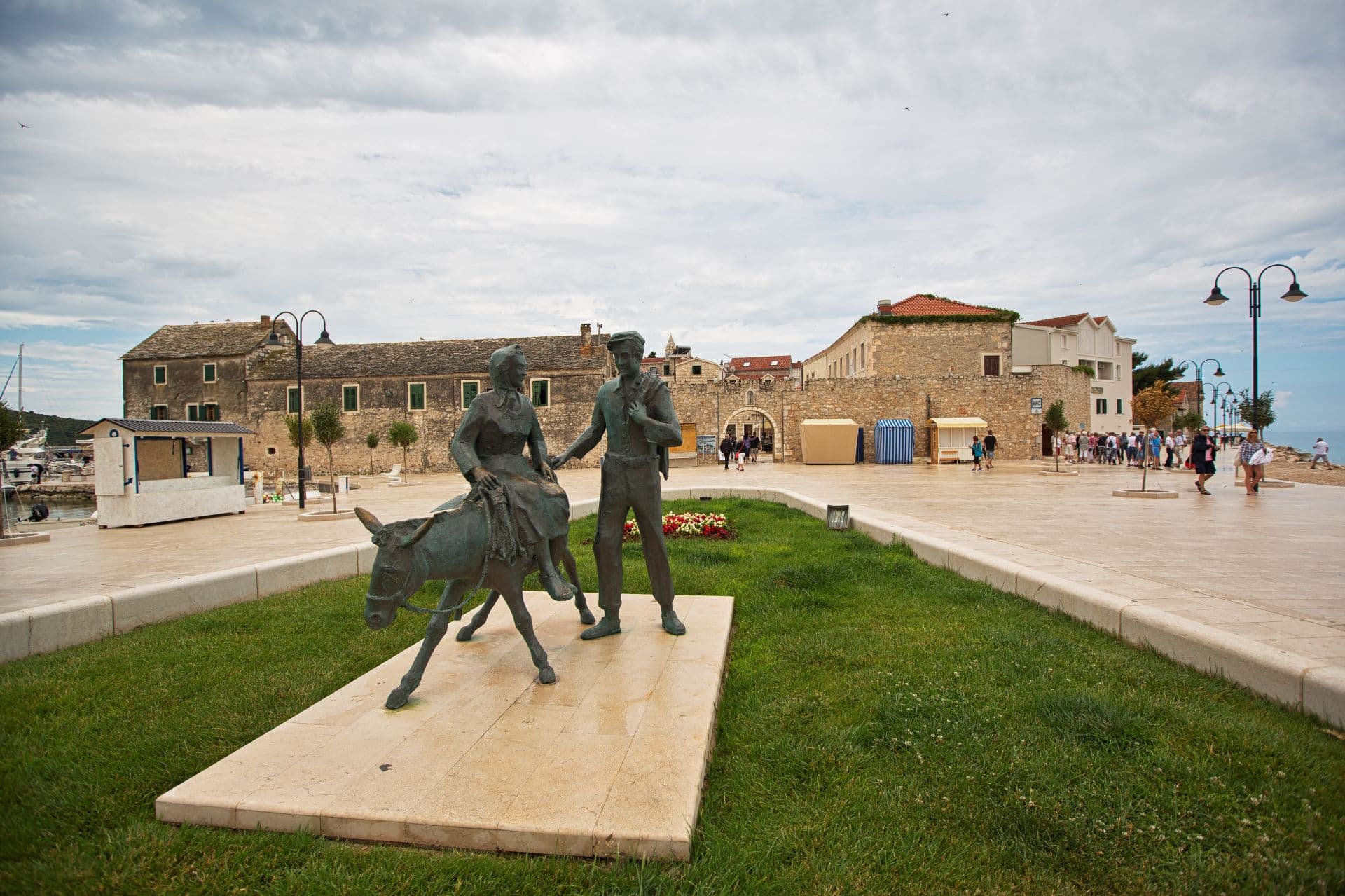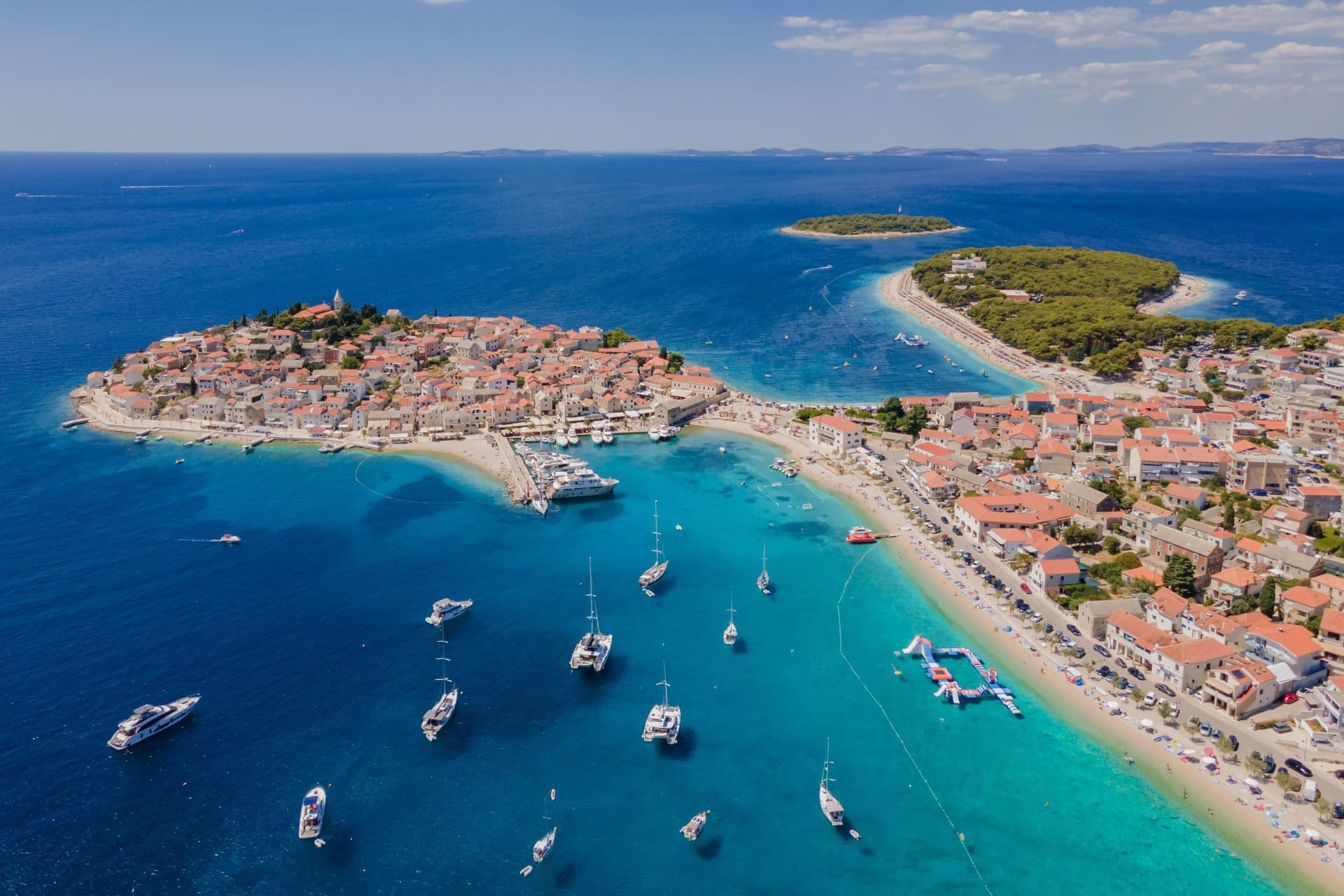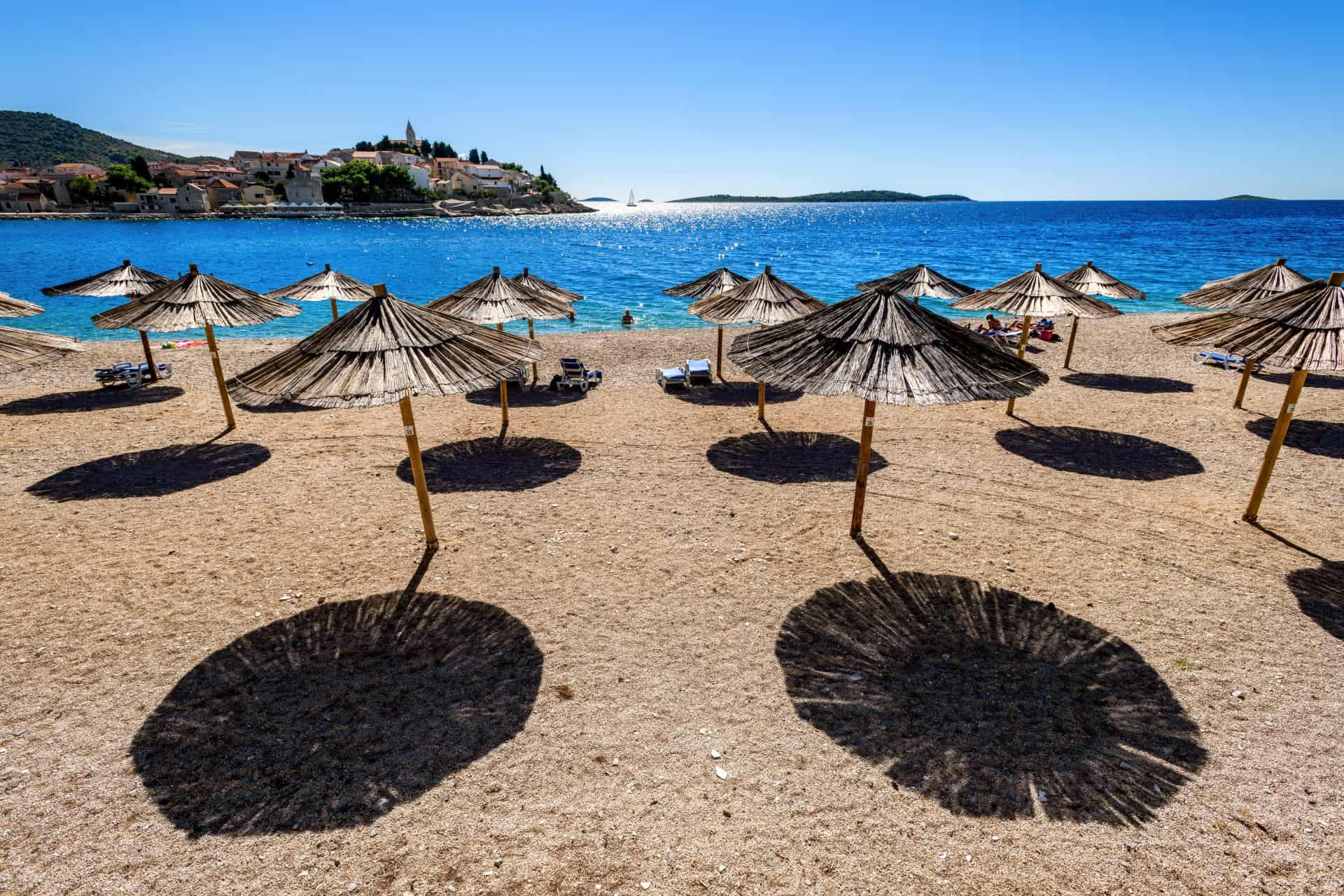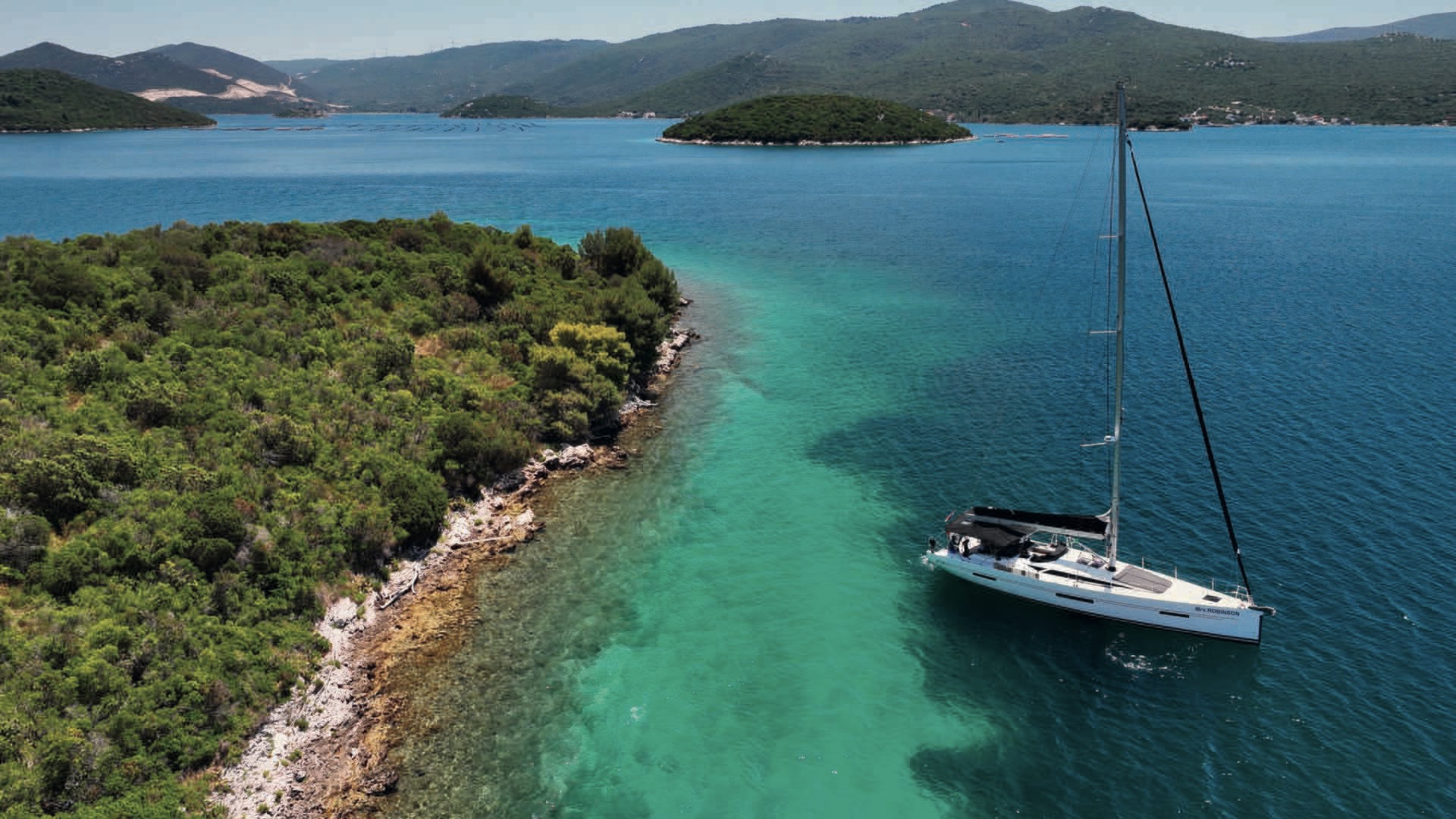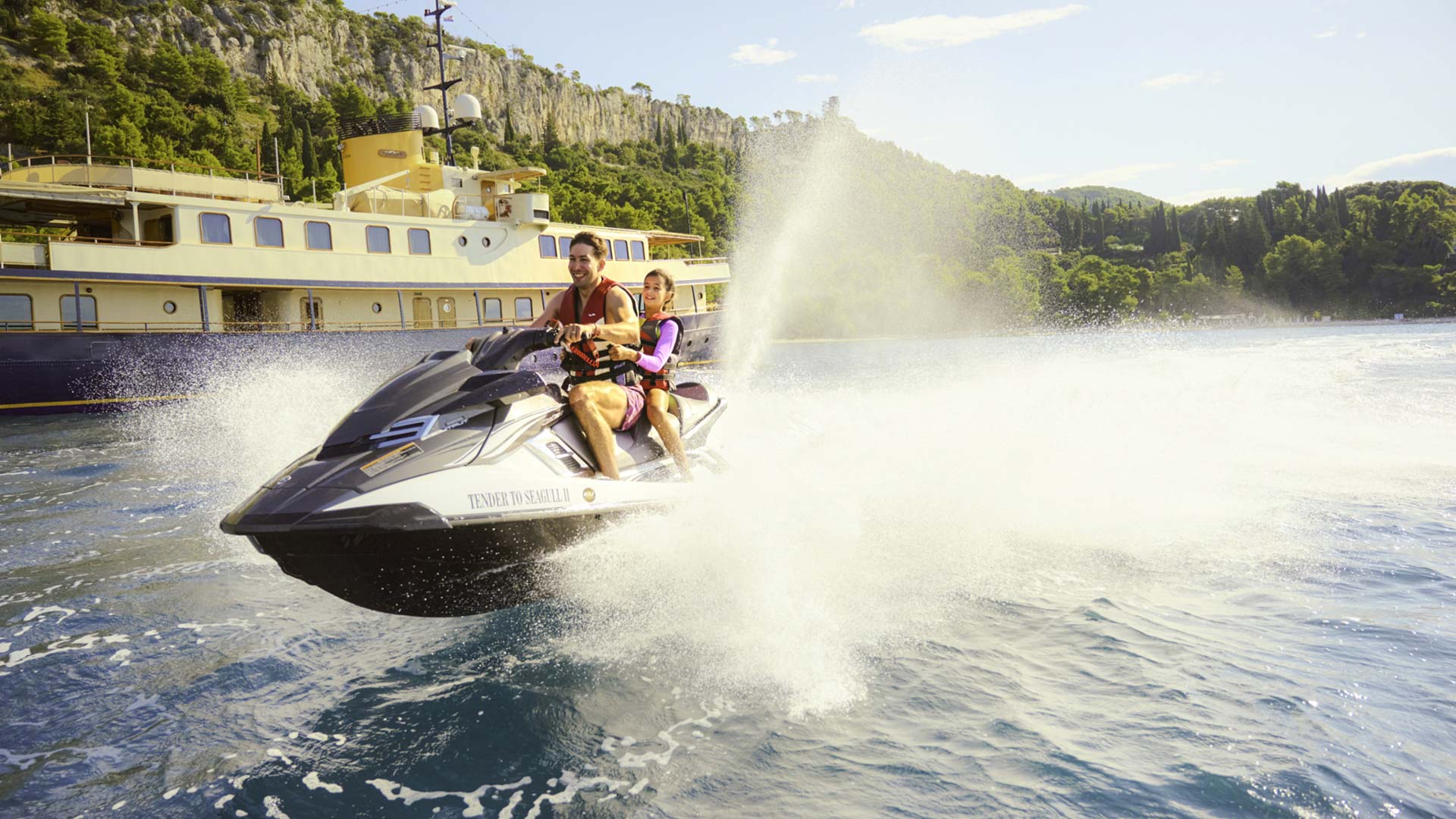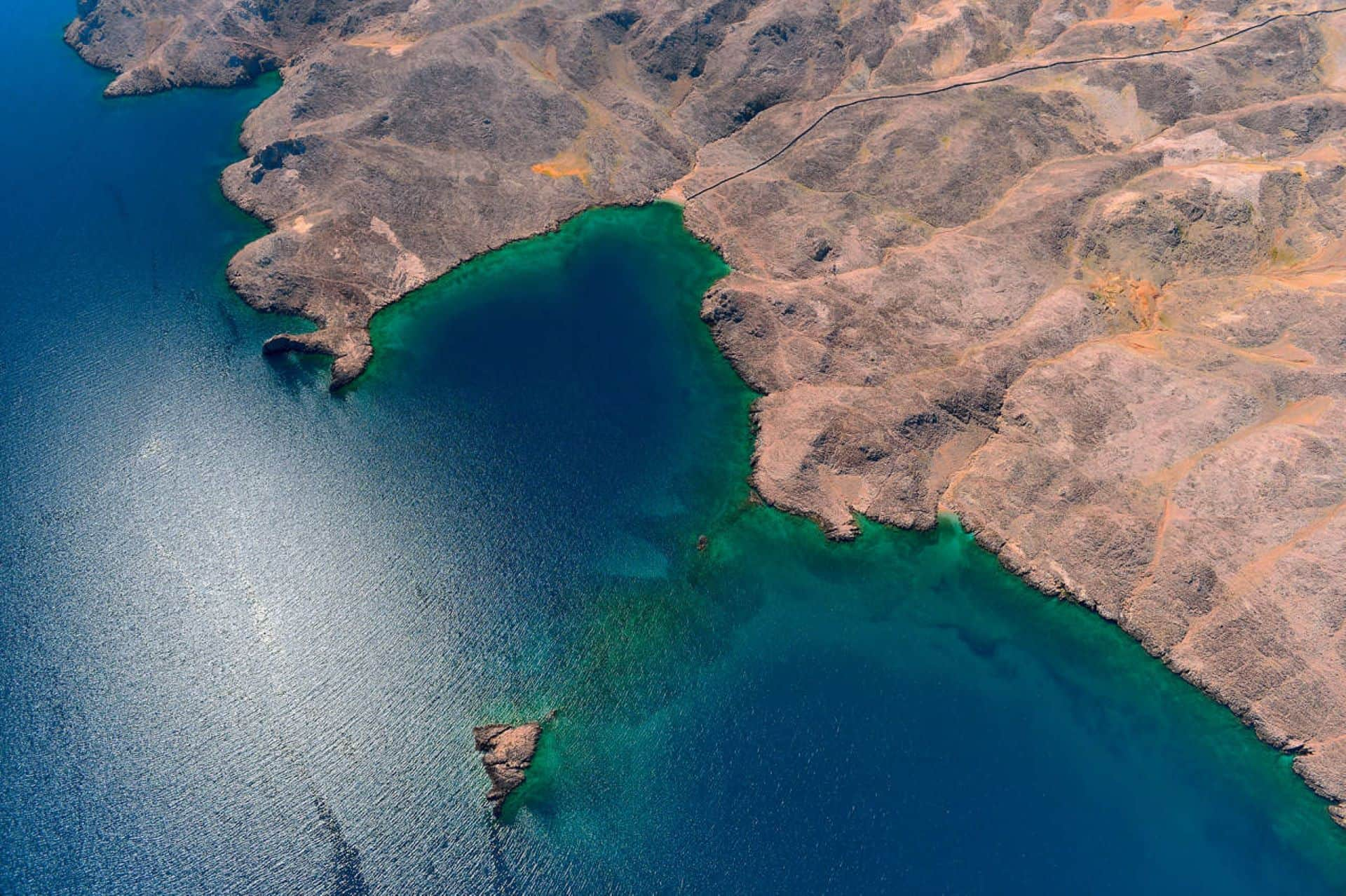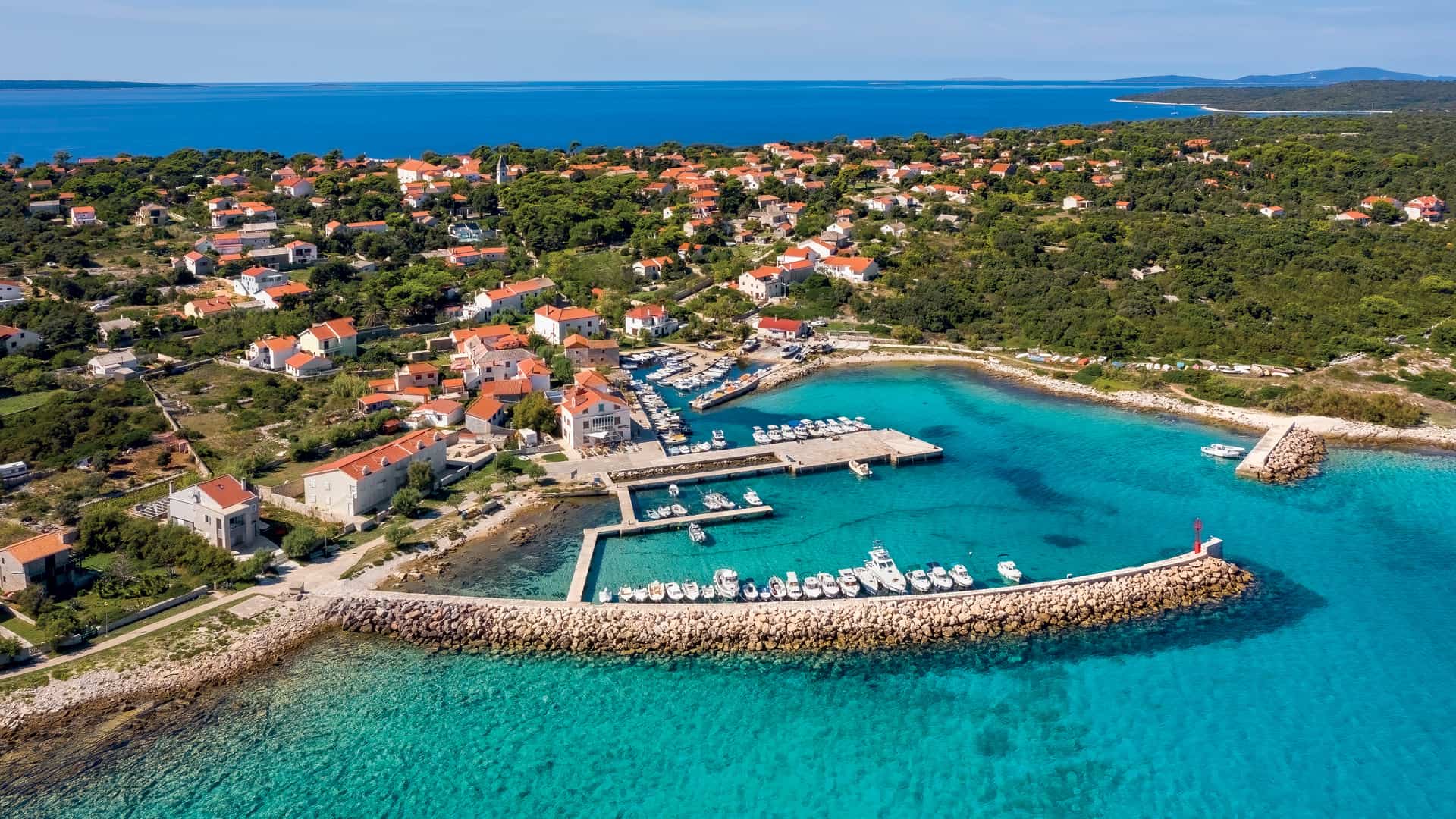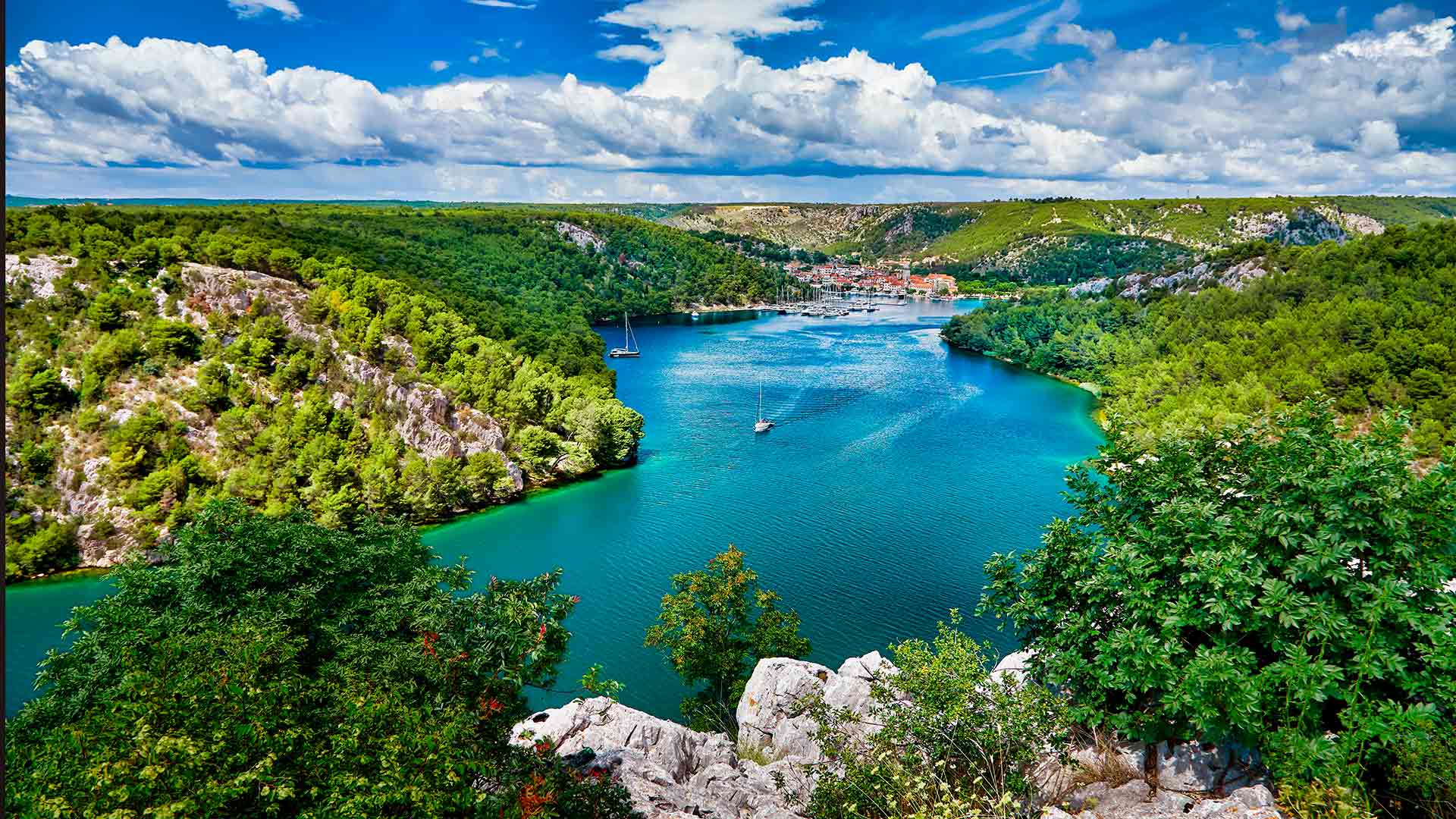With the tower of St. George’s Church as its mast, Primošten resembles a ship gently touching the shore with its stern. But not all of Primošten’s beauty lies by the sea: one must venture into the rugged karst of the hinterland, where for centuries man has borne witness to the power of his perseverance, the art of living with nature, not against it
Primošten: A Peninsula Steeped in History
Primošten is a unique agglomeration, an entire microcosm, stretching from the sea to the mountains – from the Primošten Selo peninsula to the hamlets in the hinterland, collectively known as Primošten Burnji, or, more correctly, as geography would have it, Primošten Južni.
Primošten Selo peninsula lies in the shadow of the church of St. George, built in the 15th century and expanded in the 17th century. Long time ago, the peninsula was an island, connected to the mainland by a stretch of land. In the late 16th century protective walls were erected around the village, as the constant Ottoman threat loomed all over the Adriatic coast. When the danger passed, the old bridge was replaced by a new one, and the narrow canal was forever named primošten (bridged).
Explore the Dalmatian Coast by Charter
In the era when the old core of stone semi-detached houses, mostly with stone facades, was built, the inhabitants of Primošten lived simple lives, as fishermen or farmers. The village was rather poor, as were many in these parts after World War II, until in 1947 the authorities decided to distribute farming land to villagers, to keep them from leaving – and it worked.
Vineyards Born from Hard Labor
Nowadays, the unofficial, but universally accepted Primošten brand is all about that karst terrain: the famous vineyards brimming with the indigenous Babić red grape, planted in square grids etched into the rock-hard soil.
Up on Bucavac hill, above what is now Marina Kremik, as well as on many other surrounding hills, the locals put their hands (and backs) to use into taming the impossible nature; barefoot, more often hungry than full, whipped by the winds, they created what is now a monument to their labor and a tribute to all humanity, as confirmed by its inclusion in the UNESCO World Heritage List.
They labored over the stony soil, dividing plots into a grid-like terrain offering only meager amounts of fertile soil, fenced it and planted young vines. This work of art is today instantly recognizable as Primošten vineyards.
From its vantage point over the Adriatic highway which spliced the coastal vineyards in 1966, the village appears frozen in time, as if half a century hasn’t passed – you can almost imagine it in black and white.
Still, once you actually set foot onto the coastal side of the peninsula, the newly erected, aesthetically jarring structures stand in stark contrast to the harmonious, natural architecture meticulously crafted by the ingenious builders of old times, who scaled their designs to their own height and the needs of their growing families.
Their days were long, beginning at dawn as they walked the rugged stone paths on foot or perched on a donkey, to crush rocks and draw the arable land from underneath it, build houses and and sculpt their lives out of stone, by the sheer force of their will.
Once upon a time, a photograph by Nenad Gattin showing the famous stone vineyards of Primošten graced the walls of the UN headquarters on East River, serving as a testament to human perseverance, and at Japan Flora 2000, among entries from 65 countries, the Primošten vineyards were awarded the gold medal, as well as a special recognition award for being a masterpiece of karst culture.
A Village Frozen in Time and a Glimpse into the Past
Leaving the Primošten coast behind and crossing the Adriatic Highway, you’ll find yourself surrounded by vineyards, olive groves, fig trees, immersed in a landscape dotted with towns and villages. One such village is Bojana, located in Draga bay, whose waters were once the daily bread and butter for around thirty villages and hamlets in the Primošten hinterland.
In 1993, a monument was erected in its honor, bearing the inscription, ‘Bojana, thank you for giving us life for centuries.’
These villages all lie five to ten kilometers from the coast, and roads and paths leading to and through them are now designated as hiking and cycling trails. You can access these trails from several points along the main road, or from Primošten itself.
Head towards the local beloved nightclub Aurora and at the fork in the road, turn right to reach the ancient village of Prhovo and its 13th century church of St. George, as well as Primošten Burni’s most famous landmark, Jurlinovi dvori.
Turn left for Šarićevi dvori and onto Vadalj, Bratski dolac, or Kruševo, with its 13th century church of St. Martin. From Bratski dolac, turn left and you’ll find yourself in Široke, passing by the 15th century church of St. Jere, as well as the Church of Our Lady of Loreto and Krčulja, before circling back to Jurlinovi dvori.
There are no words humble, but beautiful enough to describe this network of trails connecting the thirty or so villages, hamlets, and stone houses, many of which are now, in their simplicity, attractive destinations to lovers of rural vacations, so the best way to get to know it is by yourself.
Exploring the Primošten Hinterland: Villages, Trails, and Jurlinovi Dvori
Find a map and follow your feet – or bike, or car, all the way to Primošten Burnji in the hinterland, one of the most picturesque spots the Adriatic coast. In fact, the term hinterland can only be used loosely, as the sea is clearly visible from this spot, so climb up the karst hill an enjoy unrivaled views.
Nestled in the hinterland of Primošten, Jurlinovi dvori manor is a unique museum documenting the life in this corner of the country, a living monument and a must-see destination. When he breathed new life into two stone huts he inherited from his parents, don Stipe Perkov never imagined he would become the pioneer of rural and green tourism.
Wherever you look, you’ll find stone: stone roofs, an oil mill, old utility buildings, but also natural harmony and simple living, self-effacing beauty. If you can read the traces in space and time, you’ll glimpse the calloused hands and hunched backs that created all of this, the feet in rough sandals that polished it all. On summer days, the courtyards are bathed in the fragrance of lavender, rosemary, quince, tomatoes, geraniums, but also the stone that built and is Primošten.
Text Jordanka Grubač
Photos Pexels, Unsplash, Ivo Biočina / HTZ, Zoran Jelača / HTZ, Aleksandar Gospić / HTZ, Darko Kesnjer / HTZ



